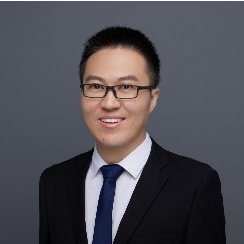Wave–Structure Interaction
A special issue of Water (ISSN 2073-4441). This special issue belongs to the section "Hydraulics and Hydrodynamics".
Deadline for manuscript submissions: closed (31 December 2022) | Viewed by 6730
Special Issue Editors
Interests: mooring; hydrodynamic; floating structures; hybrid model test method; wind and wave energy; motion control
Special Issues, Collections and Topics in MDPI journals
Interests: wave energy; sloshing; computational fluid hydrodynamics; floating structures; wave-ice interaction
Interests: hydrodynamics; nonlinear wave–structure interaction; computational fluid dynamics (CFD); green water; microplastics; ocean renewable energy
Interests: wave nonlinearities; wave interaction with coastal and offshore structures; wave and current interactions; freak waves and their interaction with current/wind; wave energy technology; sloshing and its mitigation
Special Issues, Collections and Topics in MDPI journals
Special Issue Information
Dear Colleagues,
Wave is the most common yet important environmental loading that needs to be considered properly in designing safe and cost-effective ocean and coastal structures. With the rapid development of the industry projects toward more violent and deeper waters, the accurate consideration of wave–structure interaction is experiencing new challenges when attempting to reduce the costs during the process of the design, operation, and maintenance while still ensuring safety. The aim of this Special Issue is to provide an overview of these new challenges arising from a wide range of ocean infrastructures, including the oil and gas platform, renewable energy devices, ships, marine aquaculture facilities, coastal protection structures, etc. Topics will concern new findings and developments for phenomenon mechanism analysis and/or engineering design guidance through numerical simulation or scaled model testing.
Dr. Dongsheng Qiao
Dr. Chongwei Zhang
Dr. Lifen Chen
Prof. Dr. Dezhi Ning
Guest Editors
Manuscript Submission Information
Manuscripts should be submitted online at www.mdpi.com by registering and logging in to this website. Once you are registered, click here to go to the submission form. Manuscripts can be submitted until the deadline. All submissions that pass pre-check are peer-reviewed. Accepted papers will be published continuously in the journal (as soon as accepted) and will be listed together on the special issue website. Research articles, review articles as well as short communications are invited. For planned papers, a title and short abstract (about 100 words) can be sent to the Editorial Office for announcement on this website.
Submitted manuscripts should not have been published previously, nor be under consideration for publication elsewhere (except conference proceedings papers). All manuscripts are thoroughly refereed through a single-blind peer-review process. A guide for authors and other relevant information for submission of manuscripts is available on the Instructions for Authors page. Water is an international peer-reviewed open access semimonthly journal published by MDPI.
Please visit the Instructions for Authors page before submitting a manuscript. The Article Processing Charge (APC) for publication in this open access journal is 2600 CHF (Swiss Francs). Submitted papers should be well formatted and use good English. Authors may use MDPI's English editing service prior to publication or during author revisions.
Keywords
- wave–structure interaction
- fixed and floating structures
- oil and gas platform
- renewable energy device
- ships
- marine aquaculture
- coastal protection engineering








